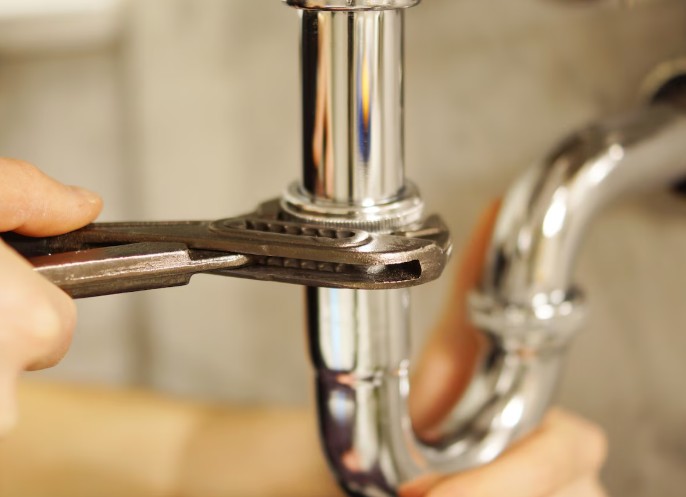
So you’re planning a bathroom renovation. You’ve chosen the tiles, picked the fittings, and maybe even found a few sleek design ideas online. It feels like you’re ready to go. But before any demolition begins, ask yourself one thing: have you spoken to a licensed plumber?
It’s tempting to think you can handle more than you should, especially when you’re watching the budget. But skipping the plumber or calling one in too late can lead to expensive, long-term problems that completely undo your early savings. Here’s why bringing in a plumber from the beginning is essential.
Plumbing Is Not Just About Pipes
Plumbing work during a renovation goes far beyond connecting a few taps or drains. It involves:
- Water pressure planning – Ensuring your new fixtures work efficiently without damaging the system.
- Drainage angles – Getting the correct slope so waste water flows properly.
- Pipe placement – Making sure pipes don’t interfere with new cabinetry, tiles, or walls.
- Regulation compliance – Meeting local codes, which can be strict when it comes to wet areas.
A plumber doesn’t just follow a plan. They help you shape it. And if you’ve already got your layout locked in, a plumber can identify early whether any of it simply won’t work from a plumbing standpoint.
Waterproofing Isn’t Just a Surface Job
Good waterproofing starts underneath the surface. If you’re moving fixtures around, like relocating a toilet or shifting the shower, it changes the way water needs to be contained. A reputable plumber in Port Macquarie will understand how to reroute pipes and waste outlets without compromising the waterproof membrane.
Doing this without a professional increases the risk of leaks behind tiles or under floors. These problems often stay hidden until it’s too late, leading to rot, mould, or even structural damage.
Hidden Problems Can Get Missed
Most older bathrooms hide issues behind the walls or beneath the flooring. Rusted pipes, tree root intrusion, poor drainage design, or DIY fixes from years ago, they all come back to bite during renovations.
Plumbers know what to look for. More importantly, they know what it means. They can tell whether something is harmless or needs urgent attention. That kind of insight can save you thousands in the long run.
Council Approval and Certification
If you’re doing anything more than a surface update, like moving fixtures or installing new plumbing connections, it usually requires formal approval. This isn’t just red tape. It’s there to protect your home, your safety, and the public system.
Licensed plumbers can issue the right compliance certificates, complete inspections, and deal with any local requirements. If you skip this, you risk fines, failed inspections, or worse, future insurance problems if water damage occurs and your work wasn’t certified.
DIY or Budget Work Often Ends in Rework
There’s a difference between being handy and being qualified. Bathrooms involve high-pressure water lines, gas in some cases, and connections that, if done wrong, can ruin an entire renovation.
Many people attempt to save by getting cheaper labour or doing parts themselves. Unfortunately, it rarely ends well. Improper fall in the shower drain, incorrect pipe fittings, or a misaligned toilet can cause a chain reaction of issues that go unnoticed until after the bathroom is finished. Fixing those later often means ripping up tiles or breaking into walls, undoing all your hard work.
The Plumber Sees What Others Miss
Here’s where a licensed plumber adds real value. They’re not just there to follow instructions. A good plumber will flag future problems before they happen. They’ll advise on better ways to position fittings. They’ll optimise water flow. They’ll prevent design flaws that you, your builder, or even your designer might overlook.
For example, you might want twin shower heads for aesthetic reasons. But if the system can’t maintain pressure for both at once, one person ends up with a weak drizzle. A plumber can tell you this early on, so you can adjust your plan before you spend money on the wrong fittings.
A Realistic Bathroom Budget Needs Plumbing Up Front
Most renovation blowouts happen because plumbing wasn’t factored in early enough. You might assume the work is minor, then discover your pipes need upgrading, your drainage has to be rerouted, or your water heater can’t support your new plan.
Plumbers give you a clear picture early. That way, you’re not making guesses about the plumbing cost. It helps you budget more accurately and avoid nasty surprises halfway through the job.
When Should a Plumber Be Involved?
If you’re just swapping tapware or replacing a vanity in the same spot, you may not need to call one in. But if you’re doing any of the following, a plumber should be involved from the beginning:
- Relocating fixtures – Moving a toilet, bath, shower, or sink.
- Upgrading old pipes – Especially in homes over 30 years old.
- Changing drainage – Adjusting the fall, angle, or pipe size.
- Installing new features – Bidets, in-wall cisterns, underfloor heating.
- Converting spaces – Turning a laundry into a bathroom or adding an ensuite.
If you’re unsure whether you need one, it’s safer to have a plumber assess the plan before you start. The cost of a consultation is minor compared to the price of fixing a mistake later.
The Long-Term Payoff
Hiring a plumber isn’t just about safety and compliance. It’s also about longevity. A professionally plumbed bathroom simply lasts longer. Pipes don’t rattle. Fixtures drain better. Water pressure is balanced. And when it comes time to sell your home, a bathroom that’s clearly been professionally done adds real value.
Plus, you get peace of mind. Knowing that every pipe, every connection, and every fitting has been done properly means you can actually enjoy your new bathroom, instead of constantly worrying about what’s going on behind the tiles.
Renovating? Don’t Skip the Smart Step
Bathroom renovations are exciting, but they can also be a trap for hidden costs and problems if not handled properly. The smartest step you can take is to involve a plumber from day one. Not after demolition. Not when the tiles go on. Before any of that.
It saves money, protects your home, and ensures your finished bathroom isn’t just beautiful; it’s built to last.




